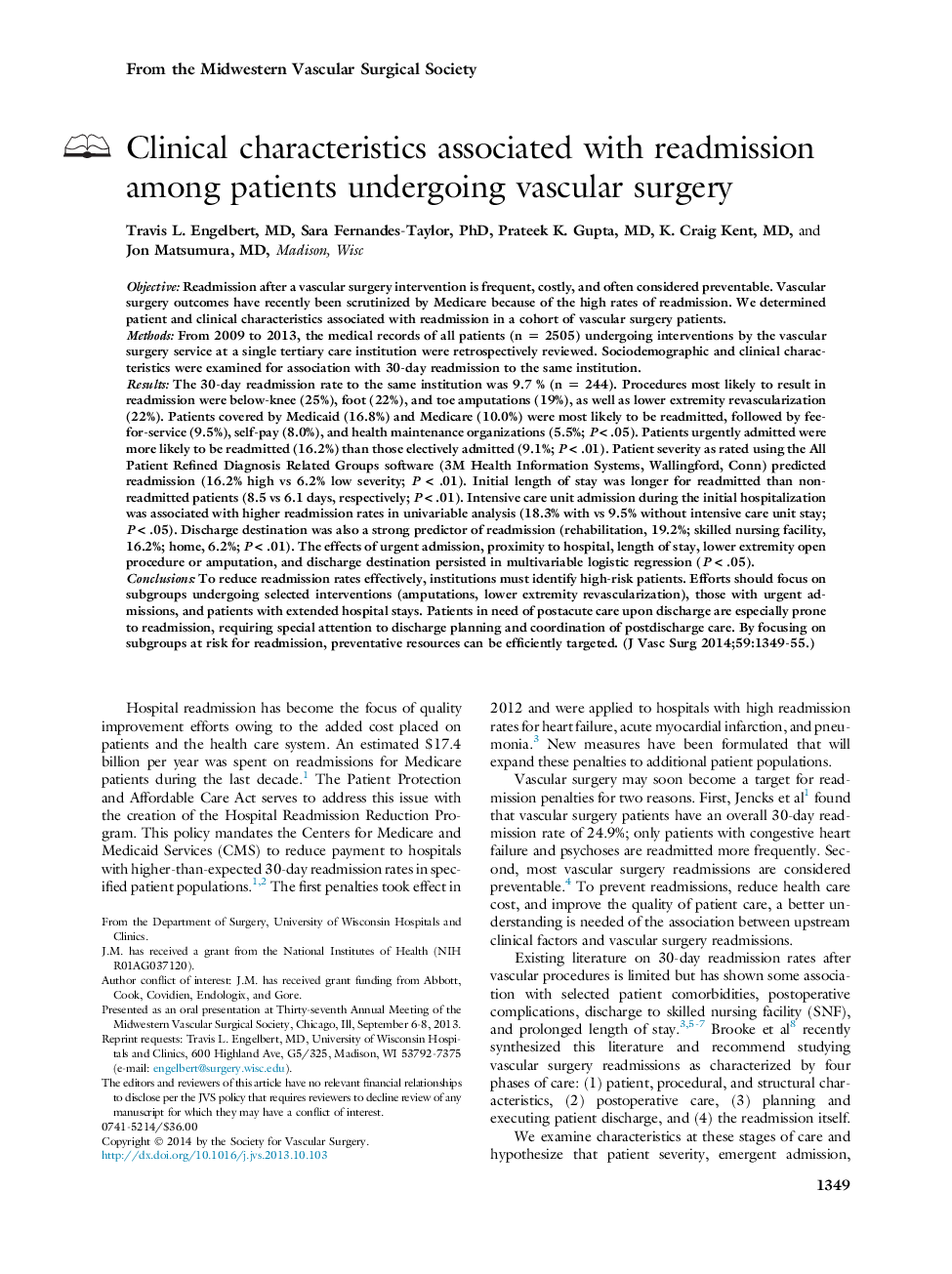| کد مقاله | کد نشریه | سال انتشار | مقاله انگلیسی | نسخه تمام متن |
|---|---|---|---|---|
| 2989140 | 1179834 | 2014 | 7 صفحه PDF | دانلود رایگان |
ObjectiveReadmission after a vascular surgery intervention is frequent, costly, and often considered preventable. Vascular surgery outcomes have recently been scrutinized by Medicare because of the high rates of readmission. We determined patient and clinical characteristics associated with readmission in a cohort of vascular surgery patients.MethodsFrom 2009 to 2013, the medical records of all patients (n = 2505) undergoing interventions by the vascular surgery service at a single tertiary care institution were retrospectively reviewed. Sociodemographic and clinical characteristics were examined for association with 30-day readmission to the same institution.ResultsThe 30-day readmission rate to the same institution was 9.7 % (n = 244). Procedures most likely to result in readmission were below-knee (25%), foot (22%), and toe amputations (19%), as well as lower extremity revascularization (22%). Patients covered by Medicaid (16.8%) and Medicare (10.0%) were most likely to be readmitted, followed by fee-for-service (9.5%), self-pay (8.0%), and health maintenance organizations (5.5%; P < .05). Patients urgently admitted were more likely to be readmitted (16.2%) than those electively admitted (9.1%; P < .01). Patient severity as rated using the All Patient Refined Diagnosis Related Groups software (3M Health Information Systems, Wallingford, Conn) predicted readmission (16.2% high vs 6.2% low severity; P < .01). Initial length of stay was longer for readmitted than nonreadmitted patients (8.5 vs 6.1 days, respectively; P < .01). Intensive care unit admission during the initial hospitalization was associated with higher readmission rates in univariable analysis (18.3% with vs 9.5% without intensive care unit stay; P < .05). Discharge destination was also a strong predictor of readmission (rehabilitation, 19.2%; skilled nursing facility, 16.2%; home, 6.2%; P < .01). The effects of urgent admission, proximity to hospital, length of stay, lower extremity open procedure or amputation, and discharge destination persisted in multivariable logistic regression (P < .05).ConclusionsTo reduce readmission rates effectively, institutions must identify high-risk patients. Efforts should focus on subgroups undergoing selected interventions (amputations, lower extremity revascularization), those with urgent admissions, and patients with extended hospital stays. Patients in need of postacute care upon discharge are especially prone to readmission, requiring special attention to discharge planning and coordination of postdischarge care. By focusing on subgroups at risk for readmission, preventative resources can be efficiently targeted.
Journal: Journal of Vascular Surgery - Volume 59, Issue 5, May 2014, Pages 1349–1355
